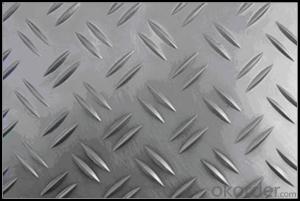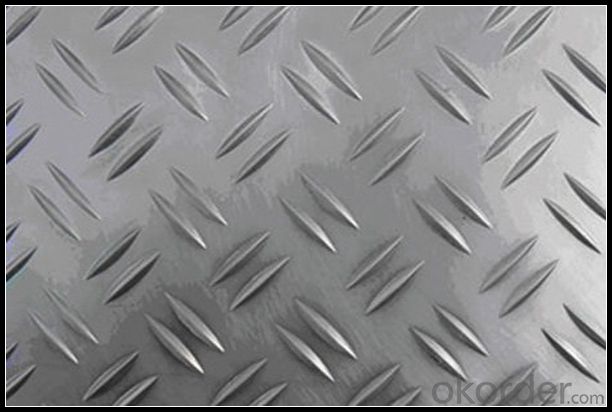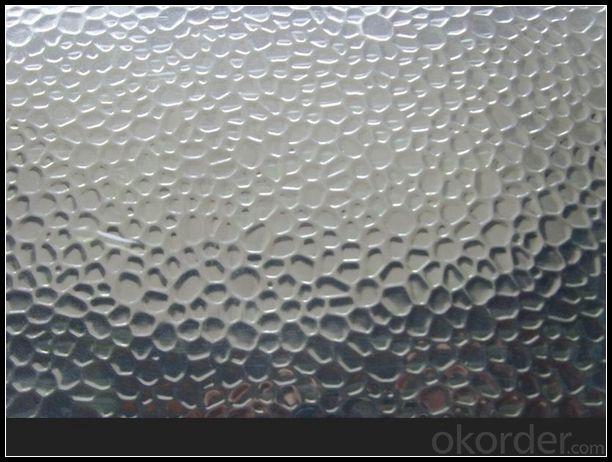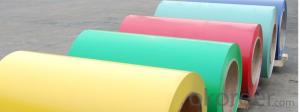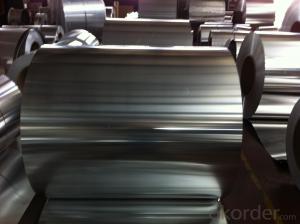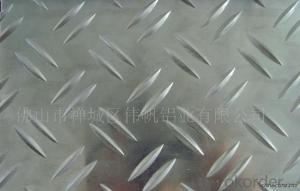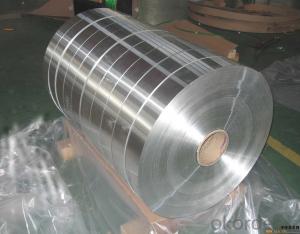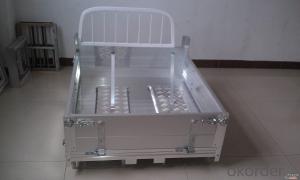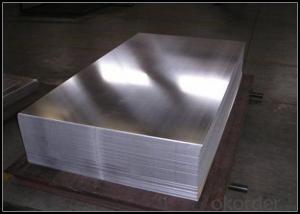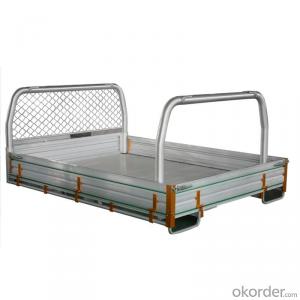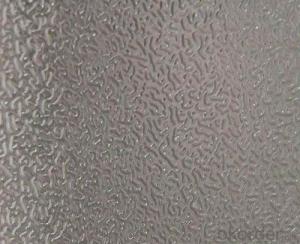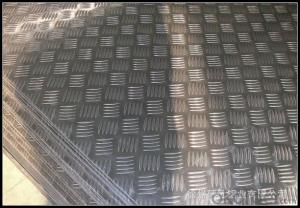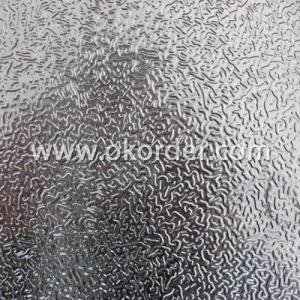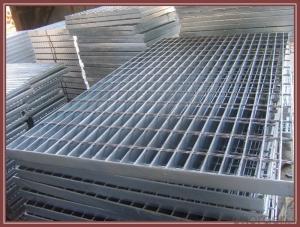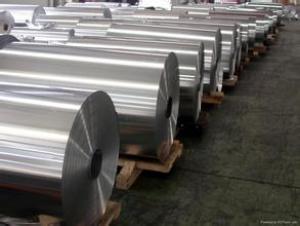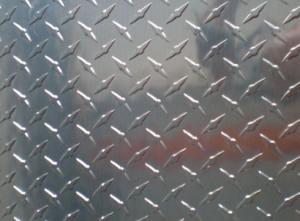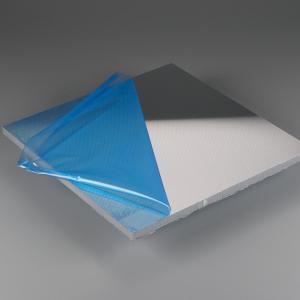Brushed Aluminum Treadplate Sheets for Truck Body Making
- Loading Port:
- Shanghai
- Payment Terms:
- TT OR LC
- Min Order Qty:
- 5 m.t.
- Supply Capability:
- 1000 m.t./month
OKorder Service Pledge
OKorder Financial Service
You Might Also Like
Specification
1. Structure of Aluminium Treadplate for Making Trucks Bodyfor Description
Aluminium Treadplate for Making Trucks Body is one semi-finished aluminium material. This coil can be rolled down to aluminium coil,sheet,circle ect. The alloy AA1050 is widly used in building, industry ect. Its weight is much lower than steel. So many customers choosed aluminium material instead of steel.
2. Specification of Aluminium Treadplate for Making Trucks Body
Aluminium Treadplate for Making Trucks Body | |
Main Specification | |
Alloy | AA1xxx (AA1050, AA1060, AA1070, AA1100 etc.) |
AA3xxx (AA3003, AA3004, AA3005, AA3105 etc.) | |
AA5xxx, AA6XXX (AA5052,AA5083, AA5754, AA6061, AA6062 etc.) | |
AA8xxx(AA8011, AA8006 etc.) | |
Temper | H14,H16, H18, H22, H24, H26, H32,O/F, T4, T6, T651 |
Thickmess | 0.01mm-100mm |
Width | 30mm-1700mm |
Standard | GB/T 3880-2006/ASTM |
Special specification is available on customer's requirement | |
3. Application of Aluminium Treadplate for Making Trucks Body
(1).Interior: wall cladding, ceilings, bathrooms, kitchens and balconies, shutters, doors...
(2).Exterior: wall cladding, facades, roofing, canopies, tunnels,column covers , renovations...
(3).Advertisement: display platforms, signboards, fascia, shop fronts...
4. Feature of Aluminium Treadplate for Making Trucks Body
Surfact Quality :
Be free from Oil Stain, Dent, Inclusion, Scratches, Stain, Oxide Dicoloration, Breaks, Corrosion, Roll Marks, Dirt Streaks and other defect which will interfere with use,
Mechenical Property:
Chemical Composite and Mechanical Property
5. Certificate of Aluminium Treadplate for Making Trucks Body
SGS and ROHS(if client request, paid by client), MTC(plant provided), Certificate of Origin(FORM A, FORM E, CO), Bureau Veritas and SGS (if client request, paid by client), CIQS certificate
6. Image of Aluminium Treadplate for Making Trucks Body
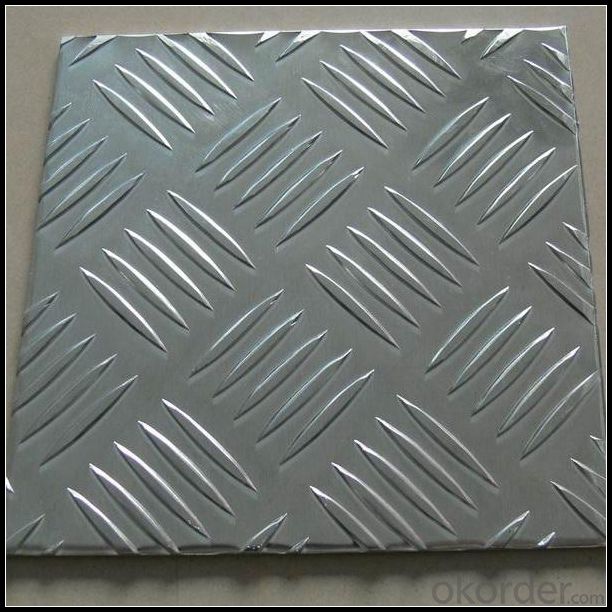
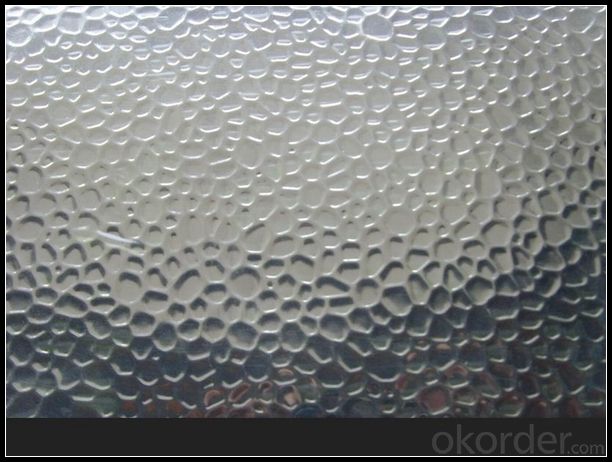

7. Package and shipping of Aluminium Treadplate for Making Trucks Body
First, plastic cloth with drying agent inside; Second, Pearl Wool ; Third, wooden cases with dry agent , fumigation wooden pallets, aluminum surface could cover blue PVC film
8. FAQ
1) What is the delivery time?
Depends on actual order, around 20 to 35 days
2) What is the QC system:
We have QC staff of 20 persons and advanced equipment, each production is with MTC traced from Aluminum ingot lot.
3) What market do you mainly sell to?
Australia, America, Asia, Middle East, Western Europe, Africa etc.
- Q: why is aluminium used instead of copper for high voltage electrical cables????
- Aluminium Cables
- Q: How do you remove stains or marks from aluminum sheets?
- To remove stains or marks from aluminum sheets, you can try using a mixture of warm water and mild dish soap. Gently scrub the affected area with a soft cloth or sponge, and rinse it off with clean water. If the stain persists, you can use a non-abrasive cleaner or a mixture of vinegar and water. Avoid using abrasive materials or harsh chemicals that can damage the surface of the aluminum.
- Q: Can aluminum sheets be bent or formed without cracking or breaking?
- Yes, aluminum sheets can be bent or formed without cracking or breaking, but it depends on the thickness of the sheet and the method used for bending or forming. Aluminum is a highly malleable metal, which means it can be easily bent or formed into various shapes without breaking. However, if the sheet is too thin or the bending or forming process is done without proper care or precision, there is a risk of cracking or breaking. To avoid this, it is important to use appropriate tools and techniques, such as using a bending brake or a rolling machine, and ensuring that the sheet is not subjected to excessive force or stress during the process. Additionally, annealing the aluminum sheet before bending or forming can increase its flexibility and reduce the chance of cracking. Overall, with the right approach and precautions, aluminum sheets can be successfully bent or formed without cracking or breaking.
- Q: Are aluminum sheets suitable for architectural canopies?
- Yes, aluminum sheets are suitable for architectural canopies. Aluminum is a lightweight and durable material that offers excellent weather resistance and structural integrity, making it an ideal choice for canopies. It can be easily fabricated into various shapes and sizes, allowing for versatile and aesthetically pleasing designs. Additionally, aluminum can be coated or anodized to enhance its appearance and protect it from corrosion, further enhancing its suitability for architectural canopies.
- Q: Are 101 aluminum sheets suitable for heat sinks?
- Yes, 101 aluminum sheets are suitable for heat sinks.
- Q: What does aluminum plate "1060-H24" mean?
- Two, second, Arabia number 0, said the original alloy, such as 1, said the original alloy after a modification, 2 means that the original alloy after two modificationsThree, third and four 60 two Arabia data represent the value behind pure aluminum content of 99% per cent in pure aluminum, said 60 pure aluminum aluminum content of 99.60%, as the standard 1050 indicates the aluminum content of pure aluminum, 99.50% of the 1070 said that the aluminum content of 99.70% pure aluminum alloy in the back. In two the number of Arabia aluminum has no special meaning, is only used to identify the different alloys in the same group, said its second modifications.
- Q: is putting Aluminium foil behind the wind shield actually generate more heat and make the car hotter inside or make the car inside cooler? assume you put foil behind all windows.
- Aluminum foil absorbs heat because the foil, like anything else, will absorb energy from a heat source according to thermodynamic principles. What that translates into is this: heat goes from where it is to where it isn't, or heat goes from where it's hot to where it's not. There are three ways for that to happen. One is convection, one is radiation and the third is conduction. If foil is exposed to flame, the hot combustion gases directly heat the foil when they come in contact with it. If the foil is sitting on the top of the range when the oven is on, the oven heats the air around it and convection currents are set. These convection currents take heat away from the oven and transfer it to things which the hot air passes over. Anyone who has had a hair dryer pointed at them knows what this is like. The skin reacts to the hot air. We feel it. Convection.
- Q: What are the different types of alloys used in aluminum sheets?
- There are several types of alloys used in aluminum sheets, including 1100, 3003, 5052, and 6061. These alloys have different properties and are chosen based on the specific application and desired characteristics of the aluminum sheet.
- Q: Are aluminum sheets suitable for artistic sculptures?
- Aluminum sheets, indeed, prove to be a suitable choice for artistic sculptures. Boasting versatility, aluminum offers numerous benefits for sculpting endeavors. First and foremost, its lightweight nature makes it easier for artists to handle and manipulate. This quality grants them the ability to fashion intricate and detailed sculptures without compromising on structural integrity. Moreover, aluminum possesses high malleability, allowing it to be molded into diverse forms and contours. This grants artists the freedom to experiment with various designs and achieve their desired artistic expression. Additionally, aluminum's resistance to corrosion and weathering makes it an ideal material for outdoor sculptures. Its durability ensures that the artwork will withstand the elements and maintain its aesthetic appeal over time. Furthermore, aluminum sheets can be effortlessly welded or joined together, enabling artists to create larger and more intricate sculptures. All in all, aluminum sheets furnish artists with a flexible and long-lasting material that nurtures creativity and guarantees longevity in their sculptural masterpieces.
- Q: Yesterday I picked up an 1988 performance bike. I bought it for the parts. It rode really good and now I'm deciding to keep it as is but I'm wondering if the bike is safe to ride. I've hear of aluminum horror stories and I'm assuming old aluminum isn't asnymore safe.Should I toss the frame and put the parts on a steel frame I have or ride it and not worry about it failing.
- Aluminum frames can last a really long time. But it depends more on how they were ridden and what kind of conditions they have seen than age. For example, I would never by a frame from a current bike racer even if it's only a year or two old. That frames seen a lot of stress and been put through a lot. Now a frame that my dad has had in the garage for the last 10 years hardly ridden, it's still practically new. That's a different story. I would recommend taking it to a local bike shop and having them look it over. This will actually achieve two things. 1. It'll let you know what kind of condition the frame is in. And 2. It'll help you build a relationship with your local shop and community. Keep in mind, that some shops aren't worth going to because they'll hassle you and tell you it's too old and you need new this and that. While some or all of that might be true, how they tell you will clue you into how they treat their customers. I've worked in the cycling industry for 10+ years and I can tell you that the condition of the frame is a case by case scenario. As such, you should have someone with some experience look it over.
Send your message to us
Brushed Aluminum Treadplate Sheets for Truck Body Making
- Loading Port:
- Shanghai
- Payment Terms:
- TT OR LC
- Min Order Qty:
- 5 m.t.
- Supply Capability:
- 1000 m.t./month
OKorder Service Pledge
OKorder Financial Service
Similar products
Hot products
Hot Searches
Related keywords
